BAE Systems, Inc. has received a £181mn contract to equip the Royal Navy’s Type 26 frigates with five Mk 45 Maritime Indirect Fire Systems (MIFS).
The system combines the 5-inch, 62-caliber Mk 45 Mod 4A naval gun system with a fully automated Ammunition Handling System (AHS).
“We have innovated and customized the Mk 45 system to provide a critical and reliable fully-automatic ammunition handling solution that revolutionizes medium and large calibre naval gunnery,” said Brent Butcher, vice president of the weapon systems product line at BAE Systems, in a news release.
“The customised, lightweight and compact Mk 45 gun system with AHS provides our customers commonality with the U.S. Navy, a highly reliable system with security of lifecycle support, and access to future technology upgrades. We look forward to continuing to build these critical partnerships and delivering the MIFS system to our U.K. customer.”
The Type 26 frigates, scheduled for delivery to the Royal Navy in the mid-2020s, represent one of the world’s most advanced classes of warships, specifically designed for anti-submarine warfare. In addition to an array of advanced weaponry and sensors, these frigates possess the ability to counter piracy and provide humanitarian aid and disaster relief.
An automated naval gun solution has been developed to enhance the frigates’ world-class capabilities. This solution, say BAE, is expected to increase crew productivity, mitigate safety hazards for sailors, and improve the operational effectiveness of the frigates, which play a crucial role in protecting the Royal Navy’s Continuous At Sea Deterrent and Carrier Strike Group.
The engineering and programme support required for this project will be carried out at BAE Systems’ Minneapolis and Louisville, Kentucky production facilities.
BAE Systems has already shipped the main equipment for the first MIFS system at the end of 2022, with installation scheduled to occur in 2023.


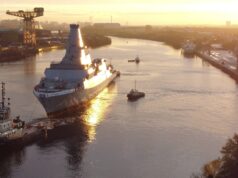
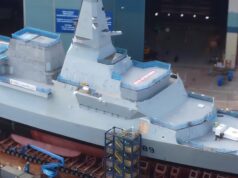
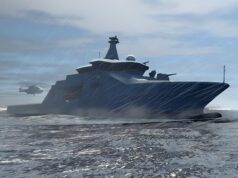
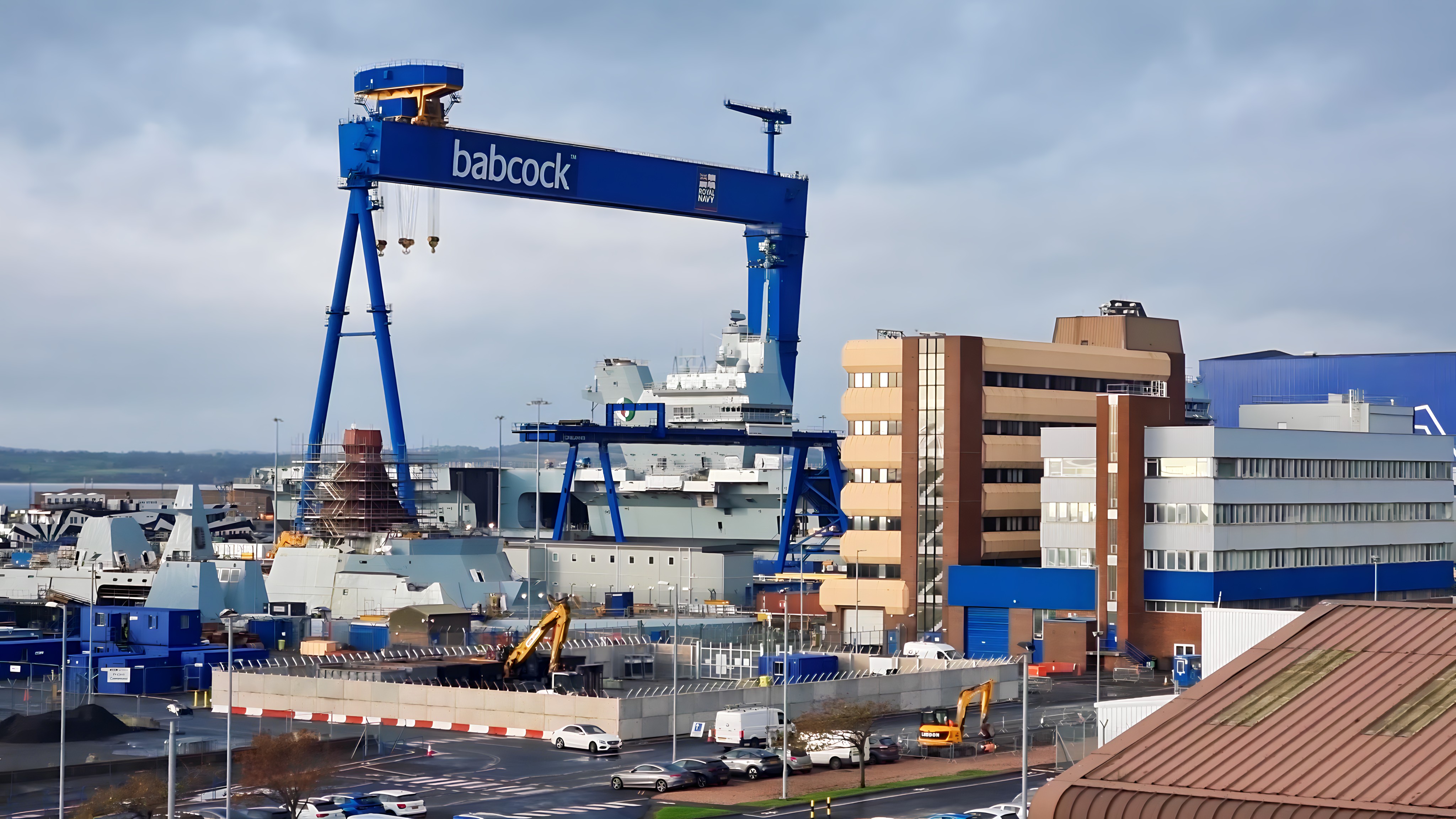

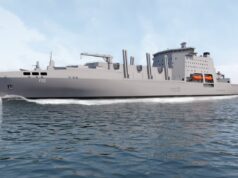

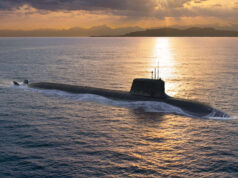
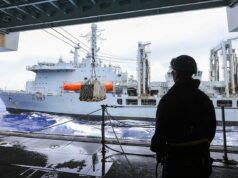
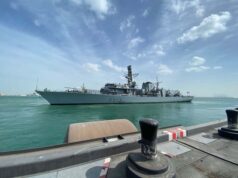

I assume this is for the five batch 2 frigates and it’s around the same price as for the first four (including the test/training system). It was said in the press at the time of the first contract that one-off integration work was likely to be a significant part of the cost. I’m guessing that’s why the unit price is a bit cheaper.
Let’s hope these five inch guns are once again reported in the press as being the size of a toothbrush, as that gave everyone a good laugh last time.
So 5 inches. What’s that in normal numbers?
So the calibre of 62 is that 62 times 5inches? Or have I got that wrong.
So that would be V inches,
Hi MS, it equates to 127mm, a bit bigger than a “tank gun”. The calibre is normally calculated as the bore x n, so 62 x 127mm = 7.874m, that’s a long barrel.
127mm
Yes you have!!
In addition to an array of advanced weaponry
Has the weapons fit been confirmed?
5” gun (this article)
2 x 30mm
2 x phalanx
Mk41 VLS (24 slots I think)
Sea Ceptor (unconfirmed number)
Cab
Etc
Was all in the original press releases.
48 Sea Ceptor
Any idea about LAWS being confirmed?
The gunnery aspect is hardly cutting edge/world beating although the ammunition to be used is. I use a cartridge that first came into use in 1873, designed for breach loading rifles. Using modern powders and primers and stronger rifles the differences are huge.
I was particularly interested in any announcements on the vls. As these ships are a way off yet that does, of course, leave extra time for developments.
The step forward from the 4.5” Kryton to this huge 5” setup is huge.
The amount of firepower it can rain down is huge and the ability to change to variable ammunition and programmable loading is immense never mind firing other types of projectile.
Should have gone for triple BL 16 inch guns..
Obvs
Should doubled down and gone for superfiring 16 in turrets …
The range step up is an improvement over the Mk8, no doubt. Rate of fire is the same not that it really matters as you are never going to pump 20 rnds per min down range for a sustained fire mission. Same number of RU rounds on the carousel.
Ignoring the Smart shell capability for now its going to do the same as a Mk8. Illum and HE which you can auto fuze Direct, Low airburst or High airburst but with more grunt when it hits. Getting smart shells such as Excalibur types will be a step change for Royal if they want support during their new Raiding posture.
The below decks deep mag is interesting. Nobody needed in the deep mag as its fully automatic. Unstow the round and propellant charge , move it to the hoist then hoist to the carousel for hoist to gun.
The fun will begin when it throws a wobbler and you need to secondary emergency resupply to the gun. Quite how they will manage that I’m not sure. But it will be old school no doubt involving Cruets, Block and Tackle and the Fwd DC party riding to the rescue again!
We all hope its fitted “for and with”, not “for but mot with”.
I’d be interested to see the projected helicopter availability stats for a frigate on the Atlantic in winter. Submarine warfare might be stretching it a bit. Submarine hunting (looking and listening) without engagement might be more accurate.
An aside question for anyone in the know, the Type 26 looks like a massive beast, does this make it less unpleasant to travel in on high seas than smaller ships?
In an ideal scenario any submarine hunting/prosecuting would be done in cooperation with at least 1 P8 and probably another ship as well. As we all know any plan, however good, never survives first contact with the enemy. I don’t know which grizzled old General said that but it’s certainly true.
On your second point, they are certainly big ships, over twice the weight of a type 12/Leander of days gone by. I suspect that the typical Winter North Atlantic conditions would have been taken into account when designing the ship, since a bigger platform should give easier operating conditions in a very rough sea state.
Helmuth von Moltke in 1880!
Even I can’t remember that far back!!
From the point of view of looking after your people better conditions have to be good, also people perform better when the extremes of environment are toned down.
S 2087 tail or S2150 bow will give you the Sub location. The Merlin Helo can localise and drop on it in one go. If you are with another vessel that has a helo ( Wildcat) they can be VECTAC’d in to drop on the target. The ship knows where the sub is and its shown in the ships command system which fuses all sensor data onto the screens. You can see the Helo on radar and thats shown in the command system. If you get an EW racket that is shown as a bearing line ( Pop up Sub radar bearing for ASM launching) The Helo Controller passes course and VECTAC data to the helo and when the command system shows the Helo over the Sub Contact you give a “Drop, Drop, Drop ” order and the helo drops the torpedo’s over the target.
All helo capable ships have Stabilisers fitted to help keep the decks in limits. To achieve the SHOL ( Ships Helicopter Operating Limits) for wind, deck roll and pitch the Officer of the Watch manoeuvres the ship onto an acceptable course to launch. (This invariably means crossing the sea at scran time and launching dinner all over the galley and dinning hall…but I digress….) When the deck and wind speed are in limits the FDO ( Flight Deck Officer…one of my previous jobs) will order the Helo to launch. Helo launch is dependent on the alert state.
The lowest alert state is stowed in the Hangar and for Wildcat is at 45 mins notice
With the Helo out and spread on the spot( Flight deck Grid) deck lock in and lashings on it can be 15 Mins notice( No crew in engines off) or alert 5 Crew in the seats ready to turn and burn. 5 Mins or less to launch.
People would be shocked at the kinds of sea states, wind, pitch and roll you can still launch at. Things like deck locks between the helo and a grid in the deck, negative pitch rotor hubs having lots of experience in Helo ops all help and the RN has a mountain of experience on Helo Ops off FF/DD.
If it gets to rough to launch its going to be to rough to detect anyway. Your towed array has speed and length of stay(Tow length) limits as well which you need to factor in. Exceed these and you can write off the array. Surface noise from waves , wind and rain all degrade sonar detection.
As for big being better…it helps. I have been on a Leander, DLG during ASW and served on T42, 2 x T22B1, T22B2, 2 xT23 and an LPD(!) doing ASW. The T22 B2 was the best. Still got thrown around a fair bit but not as much as the others…The Leander OMG…Never again…Thats why it was T22 and T23 for me and an LPD in my dotage.
Thanks, love these posts.
I had a mate on Leander Class frigates back in the 1970’s Gunbuster, he did say it was ‘horrendous’ in the North Atlantic in rough seas on exercise, with quite a few of the new unwary guys ending up black and blue from falls…
I was only on one as a short term augmentee for a month thank god. I prefered my home comforts on a T22!
Certainly at around 3,000 tons and as a result of diminutive dimensions, you can can imagine they must have pitched and rolled about in a very unpleasant way in heavy seas…
I suppose through the lens of the 1960’s and 70’s, the cut price T12, T42 ( batch one and two) and T21 allowed the RN to keep hull numbers up.
Presume LPD was supplying helos in a manner described by your post? Exercise led by T-23s, as LPDs do not apparently have an organic sonar fit? 🤔
LPD was ASW commander.
No sonar.
No organic helos.
However the control of the battle was conducted from the LPDs Ops Room using the Link Picture.
We did detect an SSN from the LPD after it hit and chopped up our S2170 tail whilst trying to do we think a sneaky prop shot… The frequency recordings that the S2170 makes had to be immediately classified and locked away. Myself and another SNCO had served together on a tail equipped FF and knew what we where looking at.
A fun 3 days alongside was the result changing out the wet end for a new serviceable cable and array.
Hmmm…dunno, but if involved in a real ASW op, would not feel very comfortable except on a T -23 w/tail, T-26 (future tense), Constellation class FFG (future tense), or a UK/US SSN. Virtually everything else would appear to be (to varying degrees) prey rather than predator. 🤔😳
Assuming maximum rate of fire thats a lot of exlosives delivered on target in one minute. Combined with some trick ammunition this seems like a superb gun system.
USA 5″/62 (12.7 cm) Mark 45 Mod 4 – NavWeaps
Damn links not working!
Sounds promising!
“A new multimission unmanned aircraft system (UAS) – combining the advantages of vertical take-off and landing (VTOL) and fixed-wing flight – was launched by BAE Systems Australia at the Avalon 2023 international airshow on 28 February.
Named the Strix, the tiltable body and X-wing-configured UAS – which has four hybrid engines – combines the convenience of VTOL with the range and speed of a conventional aircraft, producing what BAE Systems said is a unique system.”
LINK
Claimed payload of 160kgs and a range of 500 miles. Could be a useful asset for an opv.
It could be a valuable asset for other RN warships too!
And it can be fitted with a dipping sonar, sounds exactly what the frigates need to support the helicopters and can be stored in the mission bay to of a T-26. Very promising.
It can also be used in a similar way to the Ghost Bat but for helicopters. BAE Australia is a major contributor to that program. They have also designed a new weapon for STRIX & similar (including helicopters) called RAZER, which appears to be a mini JDAM-ER / SDB in the 40-50kg class.
I posted this recently, a sign of things to come perhaps?
“An official rendering shown for the first time at an event on 21 February depicts a Boeing MQ-28 Ghost Bat ‘loyal wingman’ landing aboard a UK Royal Navy (RN) Queen Elizabeth (QE)-class aircraft carrier.”
LINK
I would like to know ceiling & speed specs of both & can the RAZER munitions also work off the Ghost Bat. So far, as best I can gauge, the internal weapons bay of the Ghost Bat is looking at Raytheon’s Peregrine missile for air to air. Someone mentioned the RAZER looks a lot like a 155 shell as it’s base munition. That’s enough to take out a mbt & ruin the day of any OPV or corvette. If you can get similar ranges to larger guided glide bombs (depends on height & speed), it’s got potential. What does hybrid propulsion mean – ICE engine powering electric motors? Can an IR missile get a lock?
F35B can carry a sh*t load of heavy munitions. How does a handful of F35B compare with a sh*t load of STIX & Ghost Bats? It’s said that quantity has a quality of its own. STIX can carry a dipping sonar? Pair a STIX with Wildcat or multiple STIX with Wildcat? QE is hardly overloaded at present. There is plenty of room for alternatives. Could a two plane CAP be a thing of the past? Questions, questions.
Sounds like a job for Google!
2,000 nautical miles
Latest Updates. The MQ-28, which made its first flight in 2021, was on public display at the air show. The drone is 38 feet long (11.6 metres), has a 2,000 nautical mile (3,704 km) range and can be outfitted with various payloads.
Nigel,
That is range (which I was aware of). Speed & height is what gives a glide bomb range (from point of release). If you want your aircraft back (or even get to release point), it’s an important metric. (Though I sometimes wonder if you were small & climbed really high but very slowly, would the radar systems ignore you).
eg (public figures), a JDAM-ER is advertised as 3x a standard JDAM. From a F22 at subsonic & 12km gets you 24km for a standard 500lb JDAM. Australian RAAF on a F/A 18 at 12km & subsonic on a JDAM-ER gets 72km (hence 3x). A F22 at 15km & Mach 1.5 gets 44km range on a standard JDAM. At 3x that’s 132km range, completely passive & no IR signature (for the JDAM-ER) & a CEP of < 7m).
One for google, or, it might be classified information still.
Avalon 2023: BAE Australia designing new guided munition for UCAVs, helos01 MARCH 2023
LINK
I don’t think they know yet. Key word is designing. BAE website talks about various tests to be run in ‘coming months’. This also does not appear to be a strap on kit, but rather a fully manufactured item (if the picture is to be believed). If it is a 155 shell as some have suggested, they don’t come with launch attachments as standard. Australia does have a new 155 plant though. Just musing.
Interesting times Nigel, it’s showing a potential future for our carrier strike, an impressive one at that!
I’m interested to find out what’s happening with cats and traps. I posted a link from Bidstats which stated Manned & Unmanned aerial vehicles but I’m buggered if I can find it!
I understood that QE class was to get low powered cats for unmanned only? I always thought they should have had the traps from the start to allow STOBAR if needed. The other question is, does Ghost Bat need cats if it uses the ramp?
Like the F/A-18 Super Hornet, It might only require traps to be fitted.
LINK
LINK
Rafael also passed the same tests. It should be noted that both Hornet / Super Hornet & Rafael are twin engine fighters. SAAB though think they can do STOBAR as well. This is why I always thought QE should be STOBAR capable. France has a whole bunch of Rafael-M which could be available for free when their carrier is in maintenance. As to Ghost Bat, it’s hard to find a company with more carrier experience than Boeing. Is it just me, but Ghost Bat seem a little SAABish. Just saying.
Something I’ve advocated from day one of the QE Class.
Why place all your eggs in one basket? Make the carriers more flexible.
https://www.navylookout.com/wp-content/uploads/2020/12/Advanced-Arrestor-Gear.jpg
Arrestor wire setups are mature tech, both on land & at sea & have been for decades. Currently most northern Canadian air bases use arrestor wire landing for their Hornets.
give over
Give over what exactly???
There’s some amazing equipment coming onto the market, let’s hope we can afford some of it and in the numbers required without selling something else off to pay for it.
A tailsitter drone, interesting… the advantages of a tiltrotor but without the mechanical tilt mechanism.
It’s called innovation so I’m led to believe!
Best not get involved in that sort of thing…..
😂Drones are the future and this does look promising! Since the start of the war in Ukraine, I’ve never seen so many companies advertising them.
Not so innovative, the Nazi’s designed an even more innovating manned tailsitter… Focke-Wulf Triebflügel
A demonstration of its VTOL process and mission profile here link . Looks rather ingenious if a little ungainly at first sight but that soon disappears when you see how clever it is.
👌Cheers.
looks good but still can’t get head round using Billion £ ASW platform to provide NGS 😮
Well to be fair their is some promising looking ASW rounds for the 5inch guns…depth charges, sonobuoys, decoys and even possibly data nodes and small UUVs…it could turn out to be the Swiss Army knife of ASW.
As, I think we discussed before, the depth charges are quite strange as the amount of HE is relatively small unless there is an effector that works in a way I can’t fathom. So how it would work against a double pressure hull is a bit of a mystery.
I suspect it’s more to scare off that destroy…after all cause a bit of damage to the casing and you have one noisy sub that’s doing nothing other than trying to run and hide. It would be a mission kill unless the crew had a death wish.
I agree it is more to do with herding.
But it would be useful at periscope depth with say a tungsten dart fired from it…..
The one I find fascinating is the idea of a UUV…firing something out 5inch gun that is then still able to potter about after…that would be one robust little vehicle.
Probably has a smaller charge and a lower velocity?
As the UAV is quite light it nigh not take too much to accelerate it compared to a packed shell?
That’s true I was trying to picturing something being useful after 15,000 gravities of acceleration.
Submarines are not the only underwater threat. UUV’s are the new mini submarine equivalent. A hwt that snuggles up to you is likely just as dangerous as the conventional type.
That is true.
But I’m not seeing how they run at 20kts+ for hours to sneak up to and hang with a CSG. That requires a lot of power which is beyond lithium batteries or fuel cells.
Was thinking more like Persian Gulf, Mediterranean, SCS or even launched by a SSN, mothership or ship with well deck. Just like a SSK, don’t try to run them down, let them come to you.
A CSG is also not the only target & choke points are always a problem. You can’t always do 20 knots (try doing 20 knots through Panama or Suez) & any port you visit is an automatic choke point. A lot of civilian ships can’t do 20 knots & if you are escorting civilian ships, it means sticking with them & they tend to sail predictable courses.
Good point
In theory a shaped charge would work so long as the initial jet is protected from the water. Water (and liquids in general, hence why diesel is used as side armour on tanks) can diffuse the jet’s focus. The focus can be altered by the blast angle. So if it’s shielded and has enough stand-off to form the jet. It will punch through the outer skin with no problems. Inner skin will depend on the gap between the two skins. Even a 1cm hole punching through the inner pressure hull would be disastrous I’d expect.
Did the hedgehog ASW mortar not use shaped charge warheads?
I was thinking more of the main projectile descending and being decelerated by the water then the inner fine sabot, which might have a more sophisticated guts, being fired out using the reaction against the heavy casing to help it accelerate into the hull at a precise proximity.
In my mind the sabot penetrates the outer hull and allows the clever bit to breach the inner pressure hull. Although it has to work in such a way that the sabot self ejects from the outer hull otherwise it is jammed in the hole!
Only a few man decades of R&D to get that to work…..
It certainly is Jonathan, some very interesting technology in the works.
The 5″ inch gun seems like a no brainer across the fleet to be honest, it gives maximum
The small budget on T31 kept 5″ off the table, especially with the Amphibious reaction groups in mind, that T31 will without doubt be used as the primary escort for and will be the most likely to provide NGS across all three escorts.
Perhaps a future retrofit ‘might’ be possible….
To be honest I don’t so much mind the 57mm on the t31 for its planned duties which is patrol and lower end escort. The 57mm and x2 40mm is meant to be a very effective fit. It’s essentially a very focused goal keeper and small surface combatant especially with CAMM. If you are in enclosed waters with lots of merchants around and you need to defend against combatants or close air attack it may just have the most effective load out around..fact the load out was picked because it was the most efficient at the ranges and target types the navy asked to for.
let’s be honest these were designed to be Red Sea and gulf focused escorts….. if they then add in the strike capability ( being able to lean in some of the less friendly actors)…I think they are good
maybe that could be the point of the T32 covering out a different set of needs…maybe focused on the Amphibious group escort/littoral role as NGS would be very useful for that.
Jonathan
You obviously type faster than I do. T31 is very much a defensive fit out. It has little attack capability. If it gets somewhere round the 36 CAAM mark, it will even be able to defend for a while. If all you can do is defend, eventually you will loose. The opposition will stand off & keep hitting you til you do. T31 is supposed to be a GP frigate. Currently it isn’t.
Well the name GP frigate is a bit meaningless to be honest. After all the Type T26 is in reality a GP frigate. Yes it’s called a GP frigate but essentially from an RN point of view that’s just what they call any frigate that is not a specialist ASW surface combatant ( as Frigate in modern RN parlance is an ASW focused surface combatant).
the T31 is in reality what every would recognise internationally as a patrol frigate ( something to patrol and police) be that wrong or right that’s what the RN asked for and how they plan to use them).
Shift all the 57mm either to River B2 or the destroyers. Or shift 57mm from A to B on the T31. IH run 76mm at B in a plug in Stanflex module. Leave out the auto ammunition handler if you have to for 127mm, but 57mm on T31 at A is more than stupid.
Each of these gun systems cost circa £35 million. That’s chuffing pricey.
It isn’t just the gun barrel!
It is the whole thing including the magazine handling system and various safety and fire suppression systems as well as the electronics to drive the servos and integrate them into the CMS.
There are a lot of moving parts to this.
It might even include the armoured enclosure for the magazine. But equally the armoured enclosure could allow the guts to sit inside it.
anyone know if theses guns will be fitted to the Type 45’s to replace the 4.5 inch gun, when undergoing their sea ceptor refits?
At £35 million each….I doubt it.
I suspect your right!
sorry “you’re”
Is this contract an addition to the previously negotiated and announced contract for a second batch of T-26 frigates, or is it merely a breakout of a subcontract already included in the overall total? If an additional amount, does it raise the question of potentially unaddressed expenses? 🤔
George / Tom,
Any chance of a head to head comparison of the BAE & Leonardo systems? Both have a range of munitions (some from each other) and both have an auto loader option & both are 127mm. Both advertise themselves as lightweight, long caliber, fast firing options. Yet UK & Australian T26 are going BAE & Canada is going Leonardo. They stand out because they are all T26 derivatives. Australia already fields the BAE version, but neither UK or Canada currently field 127mm (though Canada use to, but I believe all sold off). Did they flip a coin?
is it just me that thinks 30m for these is really good value, especially if they are able to fire mini, ASW munitions.
they really do offer a lot given the volume of munitions, handling systems and size.
plus a round costs far less than the corresponding missile in most cases
surely over its lifetime its money well spent..
It’s just you
You don’t need an auto loader to fire any ammunition. Auto loader reduces personnel, enables consistent firing tempo & allows automatic change to different munitions (depending on design). You can manually do the same thing.
4.5 Mk 8 has an auto loader. The carousel is the important part. What you load onto it that allows you to change ammunition natures. With the Mk 8 if you select a different nature from regular HE the carousel indexes to an empty space. You load the new shell into the carousel space and it then indexes 180degs to gun hoist. The new shell( CoT Having first Cleared Gun, firing the old shells in Gun hoist and gun off) is hoisted and loaded into the Gun and fired.
The Mk 45 will be similar but without the Mk 8s manual shell humping in the deep mag and gunbay to get the shells onto the carousel. It will all be automated.
It puzzles me that we haven’t simply standardised the 5″ across all new builds, but gone for the 57mm for the T31s & 32s. The 5″ is far better suited for anti ship & NGS but we’ll end up with only our few expensive top line AAW(with the old 4.5″) & ASW escorts able to effectively do NGS while our cheaper GP escorts are limited to a relative short ranged pea shooter.
Hopefully the RN will purchase the Vulcano 127 GLR which will achieve a range of over 80km from a 64 calibre gun.